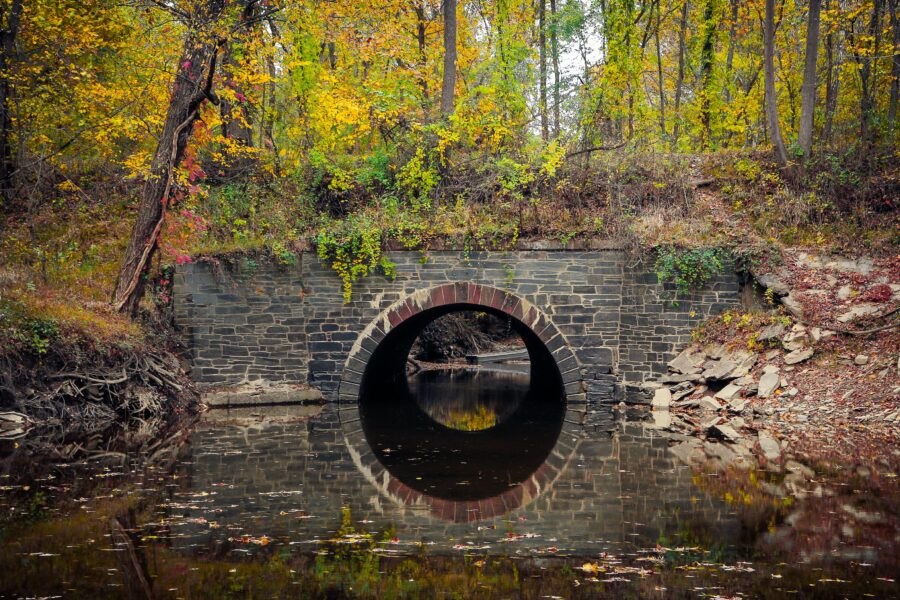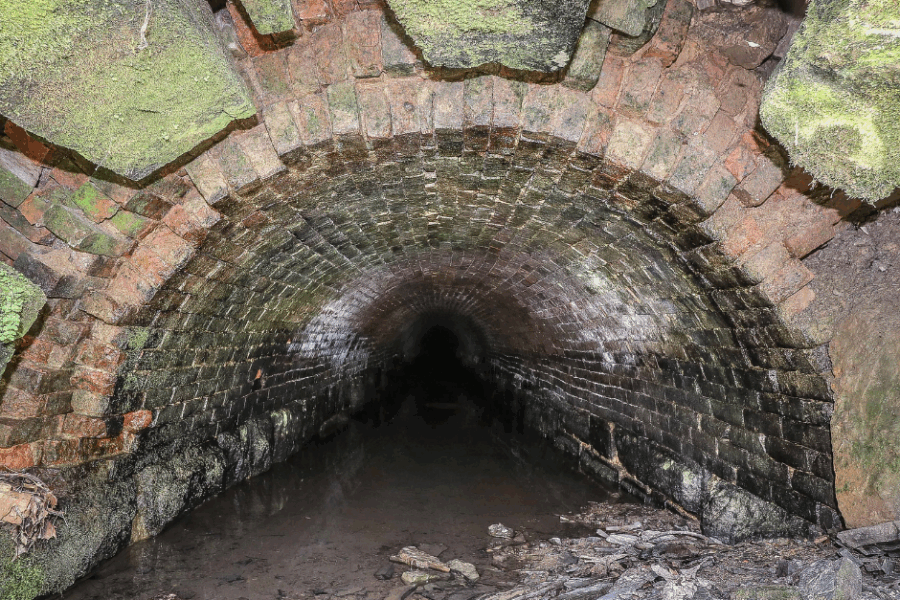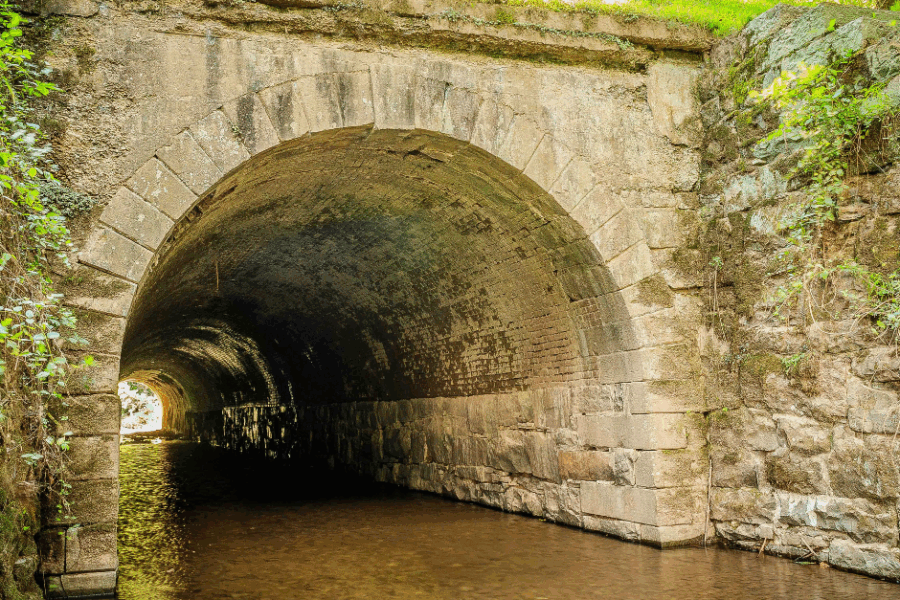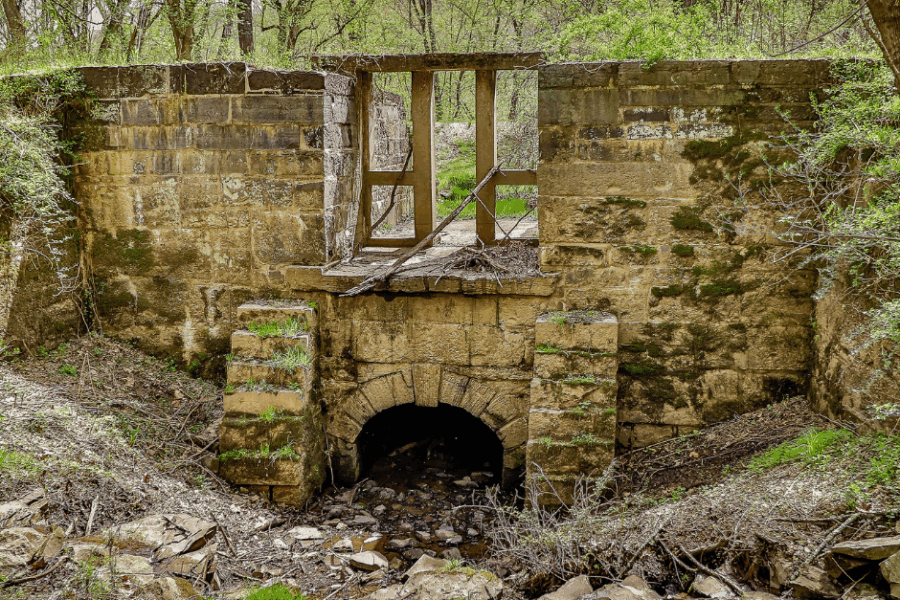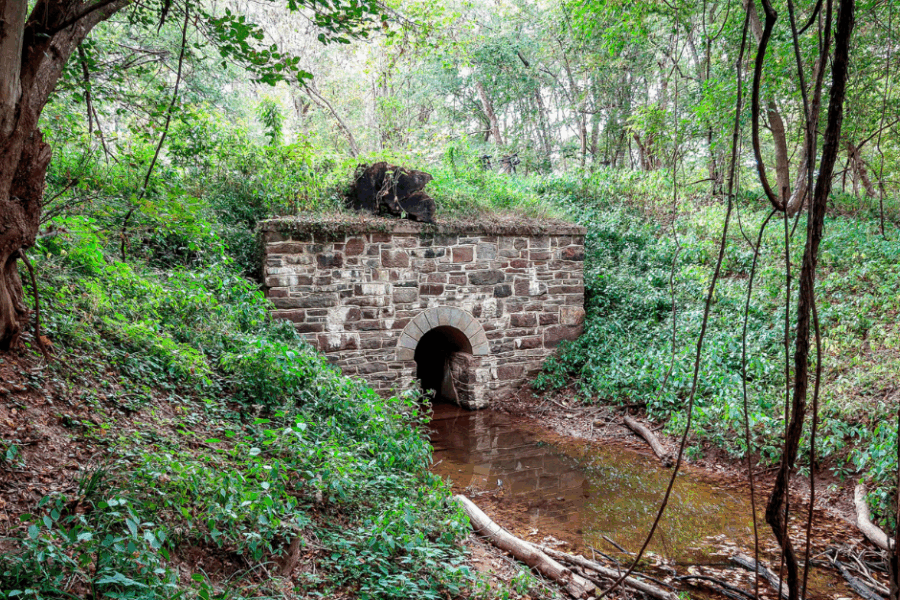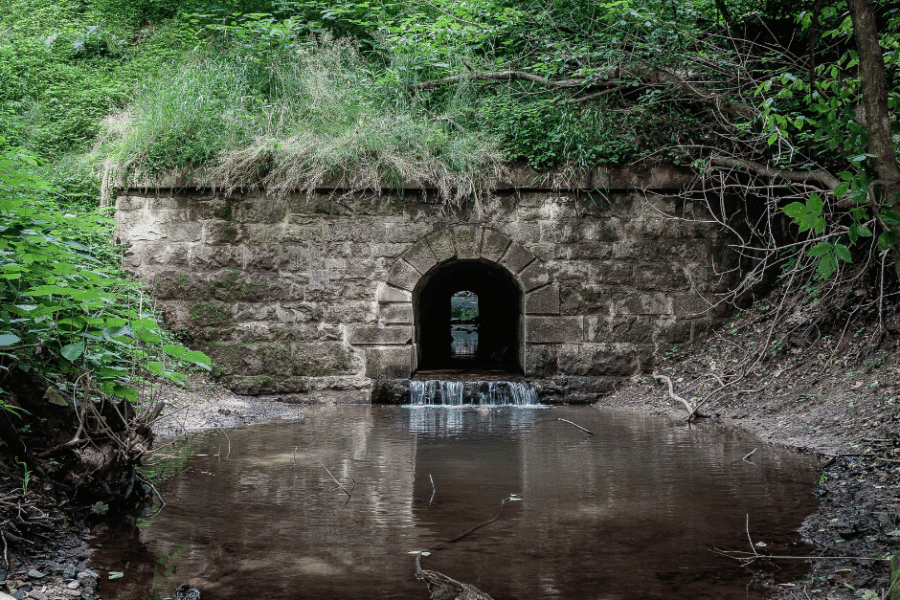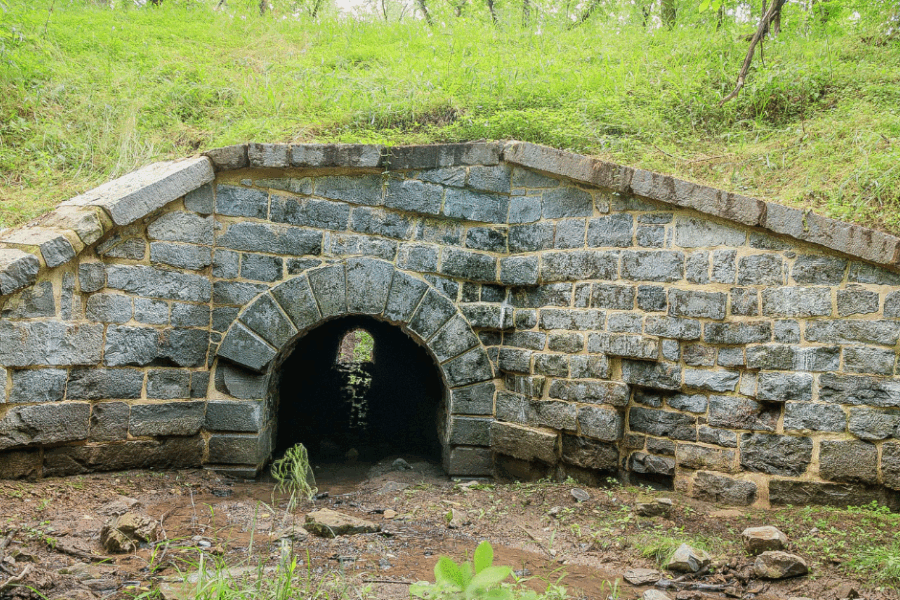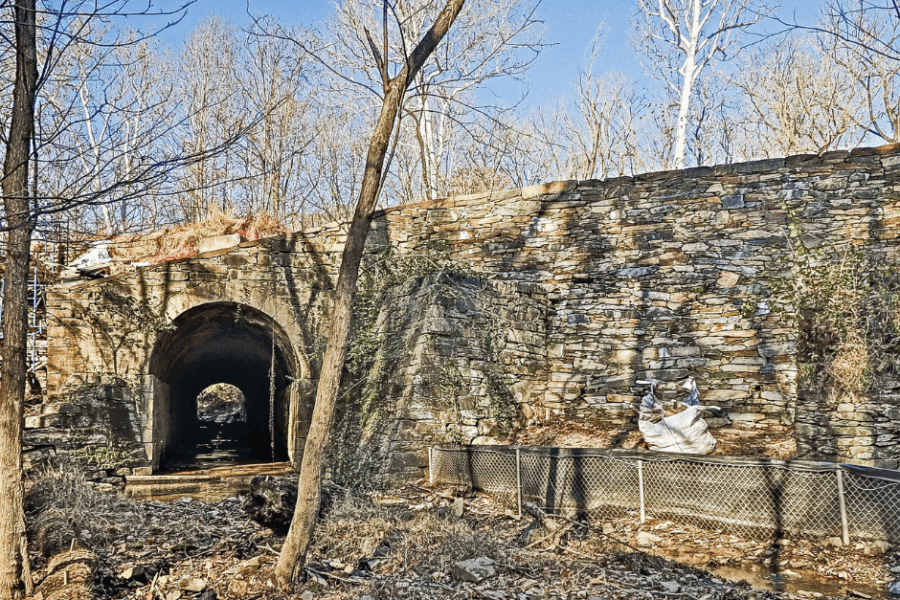Underlying the 184.5-mile C&O Canal’s towpath, more than 200 culverts were built to pass smaller creeks and streams under the canal and into the Potomac River. These engineering marvels may not be readily seen as we bike and hike the trails, but they are critical for towpath continuity.
“Culverts are the gatekeepers for water to flow safely under [and] through the park,” explains Joe Reed, Chief of Professional Services Division and Supervisory Civil Engineer. “They are ‘silent sentries’ that help to guard the water from damaging the canal infrastructure.”
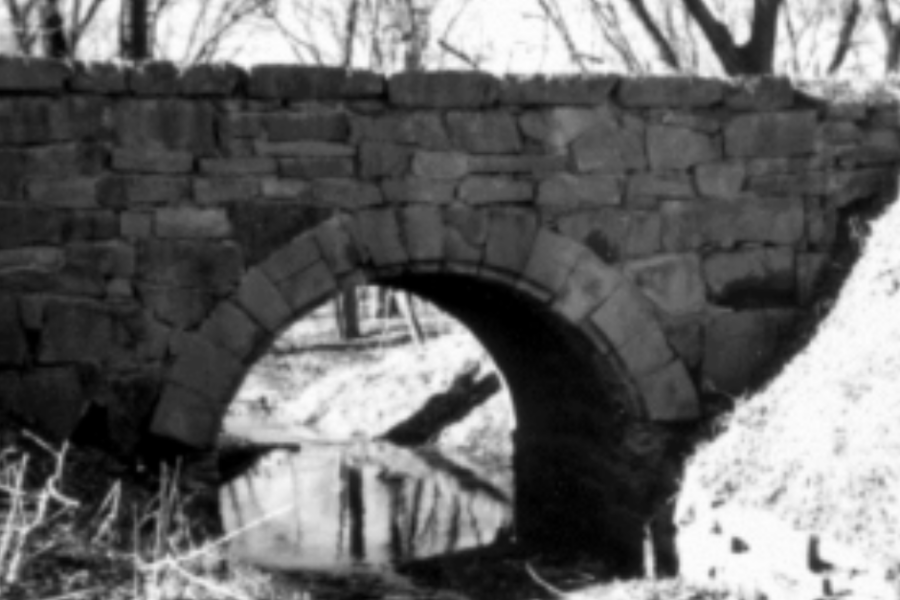
Historic photo of culvert 51 by National Park Service
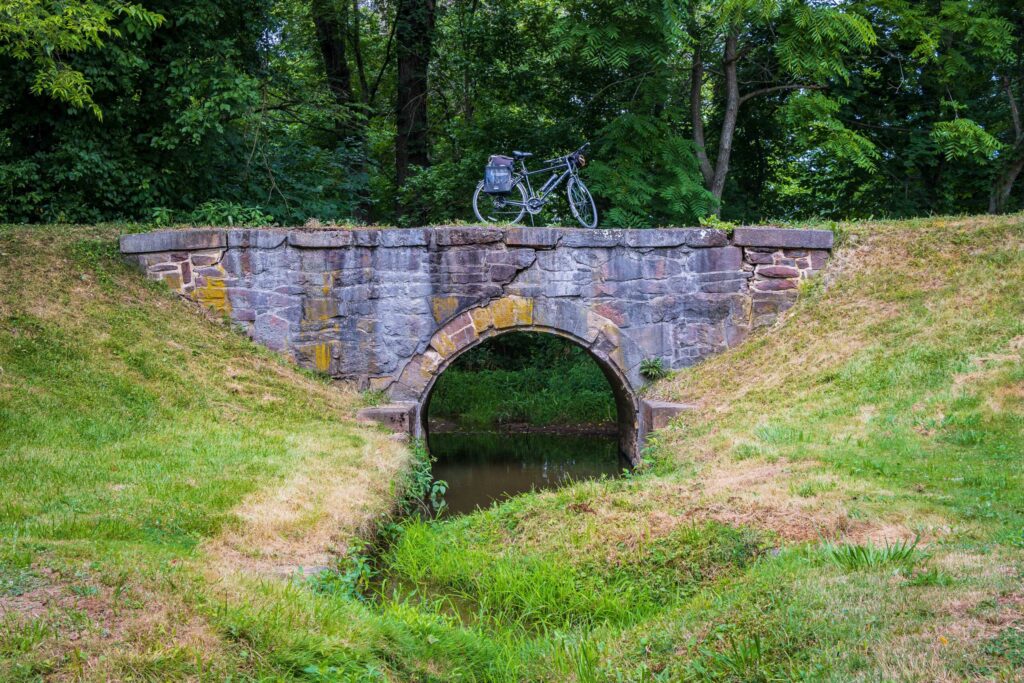
Culvert 51 at Whites Ferry by Paul Graunke
Culverts support the entirety of the towpath and help to manage flood waters and debris. They can also be used to carry vehicles over top of them or under the towpath and support other canal structures. Their effectiveness relies on them being in good repair and debris-free, an increasing challenge as the park experiences a rise in storm intensity and frequency. A culvert collapse can be devastating; in 1907, an Erie Canal culvert gave way, creating a huge hole in the bottom of the canal and completely destroying five canal boats.
C&O Canal culverts have been routinely damaged or breached, including Culvert 82 over Little Catoctin Creek. This culvert was breached in May 2018 due to flash flooding and replaced by a bridge in 2024, costing $1 million.
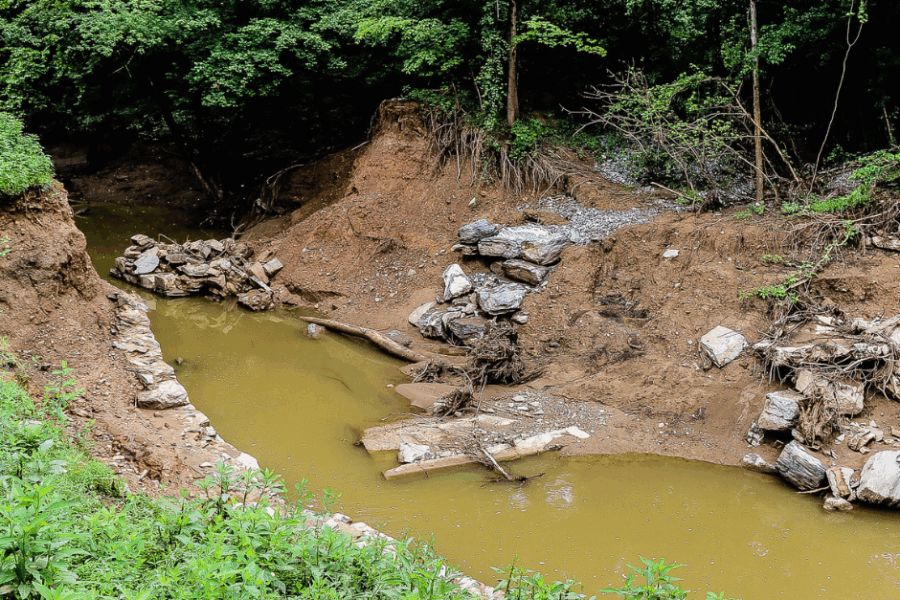
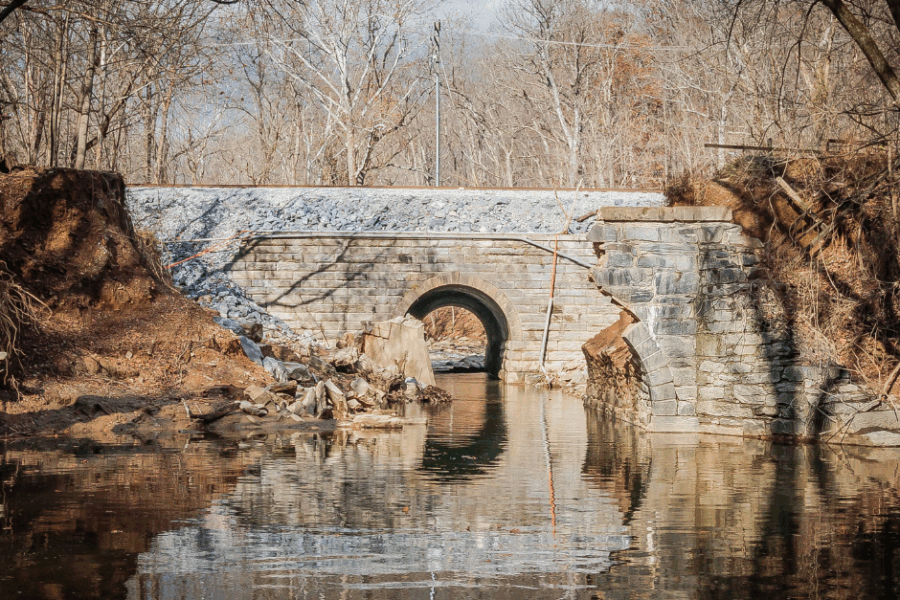
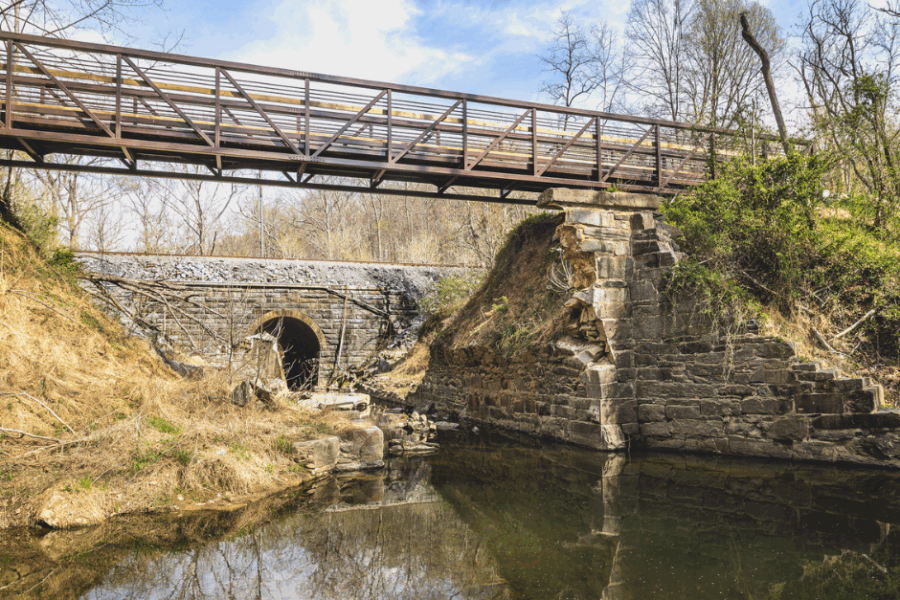
In the six years before the project was completed, there was a low water crossing that routinely flooded, disrupting towpath continuity. The Canal Towns Partnership and other partners helped fund a shuttle to move visitors safely around the washout during high-water events. Without this support, the towpath remained impassible and presented challenges for many visitors who travel the full 184.5-mile length.
While we might not notice culverts when they’re functioning, it is difficult to miss the damage caused to the park when they fail. The number of culvert repairs continues to grow each year, as well as the cost of repairing and maintaining them. In 1872, just over 20 years after completion of the C&O Canal, an engineer made an inspection of the canal and determined that culverts needed repairs totaling $2,867.42.
“The original historic culverts in the canal were constructed as early as 1828 – with the oldest approaching 197 years. This service life is notable, especially since many modern culvert materials are only designed for a typical service life of 25-50 years,” says Reed.
Currently, all culverts are in need of repair. Every culvert faces damage from debris jams, sinkholes, barrel failure, sedimentation, freeze-thaw damage to stone masonry, tree root damage, damage from tree falls, erosion, and more. Culverts can be difficult to repair due to limited access.
“To perform repair work on the culverts, you have to address the technical requirements of the physical work and also have to manage the water during construction, as well as construct temporary means for access. Along the canal, the types of materials used for culverts varied,” says Reed. “Canal builders often times used local stone, so the types of geology and natural processes that formed the stones affect the performance characteristics of it. Being cognizant of the types of stone used and reasons for failure helps us acutely identify the appropriate design repairs.”
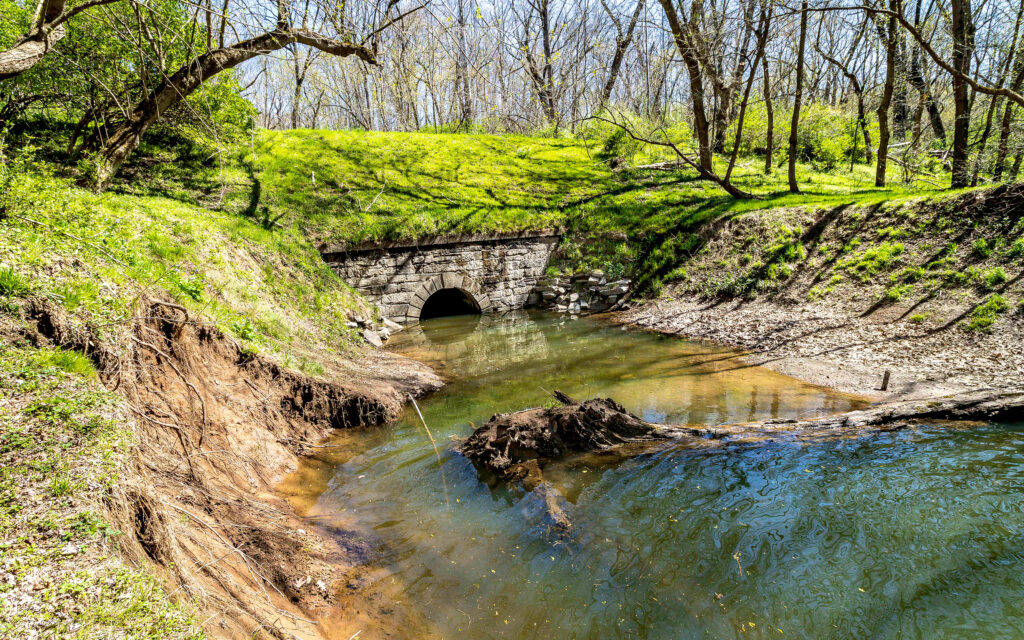
Current repair projects include Culverts 193, 183, and 71. Park-wide, National Park Service staff are clearing debris and vegetation from culverts. Repairs at Culvert 12 and 15 were recently completed in 2020 as part of the Locks 5 – 22 project. NPS uses multiple types of specialty engineering to make repairs, including structural, geotechnical, hydraulic/water resources, civil, and architectural. In addition, it takes a multidisciplinary team to develop repairs, such as cultural resource specialists, archeologists, natural resource specialists, stone masons, operations specialists, and safety professionals.
Culverts are an integral part of the C&O Canal’s historical, cultural, and recreational resources. They remain a testament to the hard work and ingenuity of the canal’s first builders and are a reflection of the creativity, dedication, and skill of NPS staff today. Through their varied design, purpose, and condition, we learn to appreciate these historical structures and their critical role in ensuring one continuous park from Cumberland, MD, to Georgetown, D.C.
